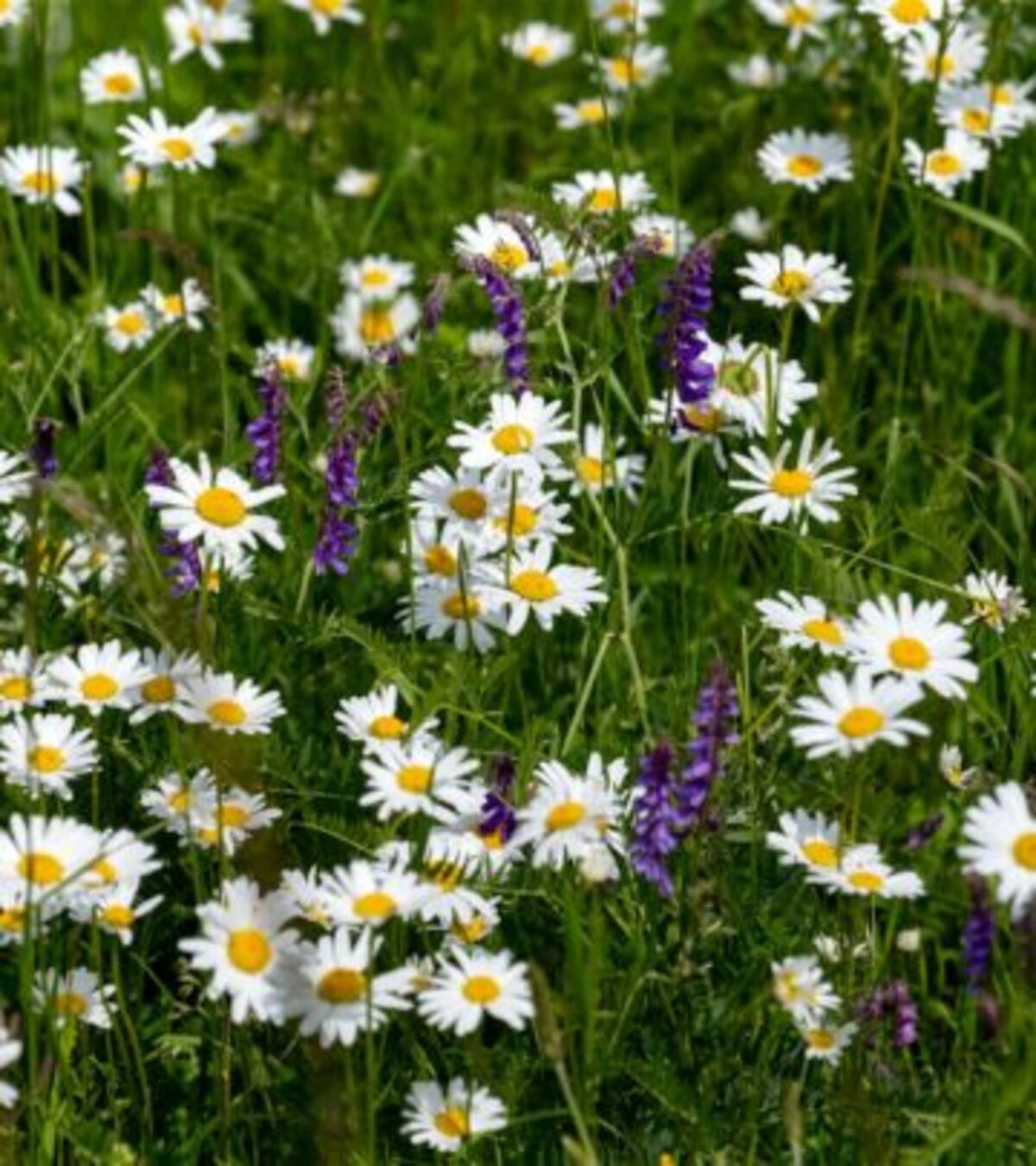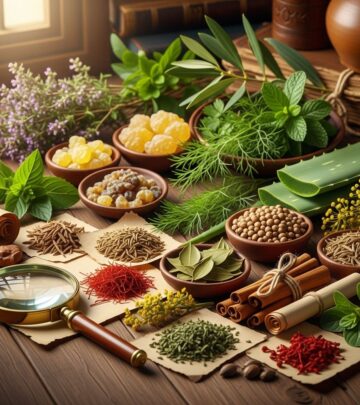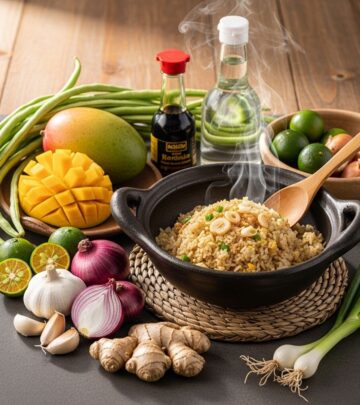Types Of Daisies: 28 Stunning Varieties To Grow In Your Garden
Discover 28 captivating daisy types for every garden style, from drought-tolerant favorites to florist showstoppers.

28 Types of Daisies to Grow in Your Garden
Daisies—synonymous with cheerfulness and uncomplicated beauty—are much more than the classic white-petaled flower with a sunny yellow center. With varieties thriving in everything from coastal breezes to arid deserts, daisies offer a stunning diversity of colors, forms, and textures for every garden setting. Whether you love fragrant ground covers, want to bring butterflies to your yard, or crave charming cut flowers for arrangements, there’s a daisy for you. Dive into our gardener’s guide to 28 dazzling daisy types and learn how to grow these garden favorites with confidence.
Why Choose Daisies?
- Versatility: Daisies thrive in various climates, from tropical to temperate and desert landscapes.
- Low Maintenance: Most are easy to grow, tolerant of drought, and require minimal fuss once established.
- Pollinator Friendly: Their open faces attract bees, butterflies, and beneficial insects.
- Enduring Beauty: Many types rebloom with little effort, providing seasonal color from spring through fall.
- Cut Garden Stars: From florist-favorite pom-poms to wild meadow gems, daisies are beloved in bouquets and arrangements.
Daisy Types to Know and Grow
Below, you’ll find a hand-picked selection of 28 daisy types, each with their unique charm, color palette, and gardening requirements. For every variety, we include a brief description, bloom time, and recommended hardiness zones, so you can plan your garden with confidence.
1. Silver Townsend Daisy (Townsendia incana)
Short stems covered in tiny white hairs give the Silver Townsend Daisy its distinctive silvery appearance. These petite perennials stay low to the ground and are perfect for dry, rocky gardens or alpine areas. Dainty white flowers with yellow centers emerge in early summer.
- Bloom Time: Early to mid-summer
- Hardiness Zones: 4-8
2. Florist’s Daisy (Chrysanthemum × morifolium)
Renowned for their densely layered petals and pom pom-like form, Florist’s Daisies are among the most popular cut flowers. Their vibrant shades span the rainbow—reds, yellows, purples, and pinks, making them a staple in floral arrangements.
- Bloom Time: Late summer to fall
- Hardiness Zones: 5-9
3. Dahlberg Daisy (Thymophylla tenuiloba)
Native to Texas and northern Mexico, this daisy dazzles as a fragrant annual ground cover with tiny, bright yellow blooms. Its bushy, fern-like foliage forms a neat 1-foot mound, which is highly tolerant of heat and drought.
- Bloom Time: Summer to fall
- Hardiness Zones: 9-11 (or as annual)
4. Shasta Daisy (Leucanthemum × superbum)
The archetypal garden daisy, Shasta Daisies feature crisp white petals surrounding a golden center. They’re beloved for their sturdy stems, long vase life, and ability to naturalize in perennial borders.
- Bloom Time: Early summer to early fall
- Hardiness Zones: 4-9
5. Oxeye Daisy (Leucanthemum vulgare)
Often seen in wildflower meadows and along roadsides, Oxeye Daisies feature classic white-and-yellow blooms. They self-seed easily, so plant with care if you wish to control their spread.
- Bloom Time: Late spring to summer
- Hardiness Zones: 3-8
6. Marguerite Daisy (Argyranthemum frutescens)
With mounded, bushy growth and profuse flowers in white, pink, or yellow, Marguerite Daisies are ideal for containers and borders. These perennials thrive in mild climates but are treated as annuals in colder zones.
- Bloom Time: Spring to fall
- Hardiness Zones: 10-11
7. Painted Daisy (Tanacetum coccineum)
Bursting with hues of magenta, red, pink, and white, Painted Daisies add drama to garden beds. Their lacy foliage is as attractive as their daisy-like blooms, making them a double delight for gardeners.
- Bloom Time: Late spring to early summer
- Hardiness Zones: 3-7
8. African Daisy (Osteospermum spp.)
Known for their bold, jewel-toned petals that can be purple, orange, or white, African Daisies thrive in dry, sunny conditions. Many varieties open and close with the sun, creating a dynamic display.
- Bloom Time: Spring to fall
- Hardiness Zones: 9-11 (or as annual)
9. Gerbera Daisy (Gerbera jamesonii)
Gerbera Daisies steal the show with large, vividly colored flowers—red, orange, yellow, pink, and white. A florist favorite, they shine in bouquets and thrive in containers or well-drained beds.
- Bloom Time: Late spring to autumn
- Hardiness Zones: 8-11 (annual in cooler climates)
10. Gloriosa Daisy (Rudbeckia hirta)
These bold daisies boast golden petals with dark brown centers and sometimes sport red or orange highlights. Native to North America, they are robust and ideal for pollinator gardens.
- Bloom Time: Summer to early fall
- Hardiness Zones: 3-7
11. Desert Marigold Daisy
With silvery leaves and bright yellow blooms, the Desert Marigold Daisy excels in hot, dry conditions and is often used in xeriscaping.
12. Michaelmas Daisy (Symphyotrichum novi-belgii)
Blooming in late summer through fall, these daisies decorate gardens with clouds of purple, blue, or white flowers, perfect for extending seasonal color.
13. Pyrethrum Daisy
Known for its pest-repelling properties, Pyrethrum Daisy displays charming flowers in pink, red, or white—often used in cottage gardens.
14. Tansy Daisy
Tansy Daisies offer bright yellow button-like blooms atop aromatic foliage, making them a unique addition to border plantings.
15. Swan River Daisy (Brachyscome iberidifolia)
Native to Australia, these dainties showcase soft lavender, white, or blue blooms and thrive as a bedding or trailing plant in containers.
16. English Daisy (Bellis perennis)
Low-growing and early-blooming, English Daisies are classic lawn and border additions, blooming from spring into summer in shades of white, pink, and red.
17. Blue Marguerite Daisy (Felicia amelloides)
Striking sky-blue petals and yellow centers give this South African native irresistible curb appeal for sunny gardens and container displays.
18. Seaside Daisy (Erigeron glaucus)
Ideal for coastal gardens, Seaside Daisies handle salty breezes and poor soils, producing lavender-pink flowers throughout the growing season.
19. Alpine Daisy (Leucanthemopsis alpina)
These compact perennials are perfect for rock gardens, offering pure white blooms and tolerance to chilly mountain climates.
20. Montauk Daisy (Nipponanthemum nipponicum)
This late-summer bloomer features thick, leathery foliage and large white flowers, delivering vibrant color just as other perennials fade.
21. Cape Daisy (Dimorphotheca sinuata)
Valued for vibrant orange, yellow, or white blooms, Cape Daisies flourish in full sun and sandy soils, making them a standout in drought-prone gardens.
22. Chocolate Daisy (Berlandiera lyrata)
These yellow, chocolate-scented flowers bloom early in the season, drawing both pollinators and curious gardeners.
23. Blackfoot Daisy (Melampodium leucanthum)
Native to the American southwest, Blackfoot Daisies form low, spreading mounds dotted with small white flowers from spring through fall.
24. Blue-Eyed African Daisy
Noted for their brilliant blue centers surrounded by white or pastel petals, Blue-Eyed African Daisies create a striking effect in mixed containers.
25. Mexican Daisy (Erigeron karvinskianus)
This low, trailing perennial produces clouds of white and pink flowers, perfect for borders, rock gardens, or as a flowering ground cover.
26. Tasmanian Tiger Daisy
With variegated, evergreen foliage and white blooms, this unique daisy adds year-round interest to milder gardens.
27. Arizona Sun Daisy
Famed for fiery red-and-yellow petals, Arizona Sun Daisies thrive in hot, dry conditions with minimal care.
28. Swan Daisy
Swan Daisies boast delicate, finely cut petals in pastel hues, offering a soft, ethereal look for flower beds and containers.
How to Grow and Care for Daisies
Planting Tips
- Choose a sunny spot—most daisies flower best with six or more hours of direct sunlight daily.
- Use well-drained soil, and enrich with compost before planting.
- Dig a hole twice as wide as the root ball; position the plant at the same depth as its container.
- Water thoroughly after planting, then mulch to conserve moisture and suppress weeds.
Ongoing Care
- Water regularly during the first season. Once established, many daisies tolerate drought.
- Fertilize with a balanced plant food in late fall or early spring.
- Deadhead faded blooms to encourage reblooming and maintain tidiness.
- Divide clumps every few years to rejuvenate and control size.
- Stake taller varieties as needed to keep them upright.
Choosing Daisies for Your Garden Style
- Cottage Gardens: Try Shasta, English, and Painted Daisies for a romantic look.
- Prairie or Wild Gardens: Plant Gloriosa, Blackfoot, and Oxeye Daisies to attract pollinators.
- Modern Containers: Gerbera and African Daisies offer bold colors and structured forms.
- Coastal or Drought-Tolerant Gardens: Opt for Seaside, Desert Marigold, or Cape Daisies.
- Ground Covers: Dahlberg, Swan River, and Mexican Daisies quickly fill spaces with blooms.
Flower Arranging Inspiration
Many daisies shine in cut flower bouquets. Florist’s Daisies, Shasta Daisies, and Gerberas add volume and longevity to arrangements. Try mixing colors and petal forms for playful, textural displays. For a simple, cheerful bouquet, a bunch of classic white daisies in a mason jar never goes out of style.
Quick Table: Daisy Highlights
| Daisy Type | Main Color(s) | Height | Best Use |
|---|---|---|---|
| Shasta | White/yellow | 1-3 ft | Borders, cutting |
| Gerbera | Pink, red, yellow | 1-2 ft | Containers, bouquets |
| Dahlberg | Yellow | 1 ft | Ground cover |
| Gloriosa | Gold/red | 2-3 ft | Wildlife gardens |
| Oxeye | White/yellow | 1-2 ft | Meadows |
| African | Purple, orange | 1-2 ft | Containers |
| Painted | Pink, red, white | 1-2 ft | Decorative beds |
Frequently Asked Questions (FAQs)
How much sunlight do daisies need?
Daisies generally prefer full sun—at least 6 hours of direct sunlight per day for robust blooms and healthy growth.
Can I grow daisies in containers?
Many daisy types, especially Gerbera, Marguerite, and African daisies, thrive in containers as long as they receive adequate sunlight and well-drained soil.
Are daisies annuals or perennials?
Some daisies—like Shasta and Oxeye—are perennials, returning year after year, while others, such as Dahlberg and African daisies, are often grown as annuals in colder climates.
What’s the best time to plant daisies?
Plant daisy seeds or transplants in early to mid-spring after the threat of frost has passed and the soil is warming up.
How do I keep daisies blooming longer?
Deadhead spent blooms regularly, provide even moisture, and fertilize before peak bloom periods. Dividing perennials every few years keeps plants vigorous and blooming strongly.
Conclusion: Let Your Garden Bloom with Daisy Diversity
From wildflower meadows to elegant bouquets, daisies are versatile, cheerful, and resilient. With 28 types to explore—from petite ground covers to showy florist blooms—there’s a perfect daisy for every garden and gardener. Start with a few varieties, experiment with colors and placements, and soon you’ll understand why daisies are beloved around the world.
Related Resources
- The Beginner’s Guide to Growing Gladiolus Flowers
- Everything You Need to Know About Growing Petunias
- Your Guide to Companion Planting
- Grow These Yellow Blooms for Sunny DIY Bouquets
- The Best Annual Flowers for Your Yard
References
- https://www.countryliving.com/gardening/g32161249/daisy-types/
- https://www.countryliving.com/gardening/a22109231/outdoor-daisy-flower-care/
- https://www.southernliving.com/garden/flowers/daisy-flower-plant
- https://southernlivingplants.com/the-collection/plant/red-garden-jewels-gerbera-daisy/
- https://town-n-country-living.com/daisy-printables-for-summer-art.html
Read full bio of Anjali Sayee











